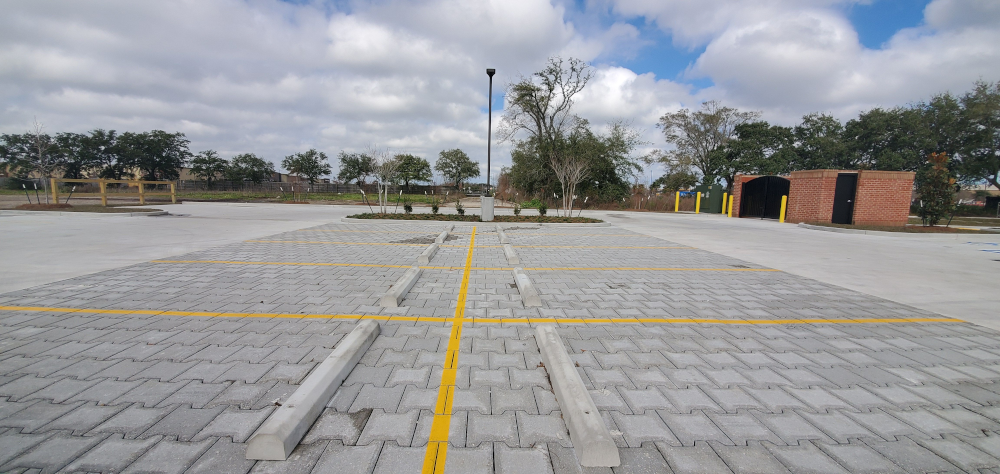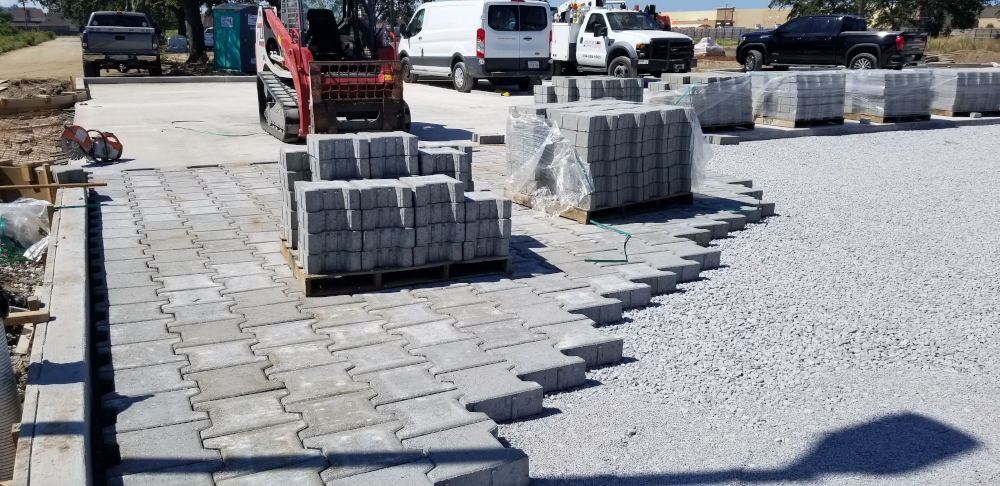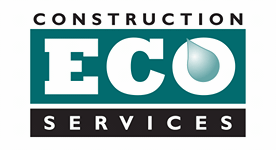
It’s a 3-in-1 Solution: a Detention Pond, Drainage Inlet and a Water Quality Unit
Permeable concrete pavers and pavement has become a common Green Stormwater Infrastructure (GSI) practice in New Orleans and other parts of Southeast Louisiana. Usually, permeable pavement is installed in parking stalls and only captures, stores and treats stormwater that falls directly on it. While this is a great application of GI to minimize runoff and reduce flooding, it doesn’t capture the real value of permeable pavement.
Construction EcoServices (CES) educates designers on multifunctional stormwater management and the value of getting more bang for your buck when using Green Infrastructure. Besides being used for capturing rainfall, CES has proved that permeable pavement can serve the same function as a drainage inlet, detention pond and a water quality unit. For this to happen there are certain criteria that permeable pavement must meet. First, the pavement must be maintainable. Permeable pavers that use aggregate infill can be difficult to maintain and other types of pervious pavement (asphalt, concrete, etc.) are limited by smaller voids that clog quickly. This is one reason why most designers will only have a 1:1 drainage area ratio when using permeable pavement. Second, the pavement must be able to infiltrate at high flow rates. If you want to use a 10:1 drainage area ratio, the permeable pavement needs to be able to infiltrate at least 1,000 in/hr or more. That sounds like a lot because it is, but it can be achieved with the right type of engineered solution.
The design team at Duplantis Design Group (DDG) applied this multifunctional stormwater management concept on a new medical center in New Orleans East. DDG used permeable concrete for this type of project in the past, but it didn’t achieve the success they wanted. Construction EcoServices (CES) teamed up with DDG to deliver a multifunctional solution to their permeable pavement needs, PowerBlock by ACF Environmental. The open joints provide adequate space for sediment to be captured while also infiltrating at a rate of 1,000 in/hr. In addition to the high-performance specification, Construction EcoServices provides a 3-year maintenance warranty to the owner. No other permeable pavement comes with this type of warranty, which says a lot about its performance.
How did PowerBlock serve the function of a detention pond, drainage inlet and a water quality unit on this project? First, the subgrade consists of two layers of compacted stone, separated by a layer of geogrid. The void space in the subgrade provided more than 1,500 CF of storage. Second, a 4:1 drainage area ratio was used so that all the drive aisles and parking stalls that weren’t permeable drained to 3,900 SF of PowerBlock. This allowed the engineer to reduce the number of drainage inlets in the parking lot to just one. Lastly, the open joints and top layer of stone in the subgrade traps sediment suspended in runoff. The open joints also make it easy for a vacuum truck equipped with a specialized vac head to maintain it.
Installation of the subgrade and PowerBlock system took approximately a week and half. The drive aisles were poured before the parking stalls, which reduced the number of blocks that needed to be cut. Installation of the permeable pavement was provided by Mud Bug Pavers under the direction of the General Contractor, Kent Design Build. CES completed an infiltration test after installation to verify that the performance met the 1,000 in/hr specification.
Success stories like this prove that permeable can do more than capture rainfall and meet a regulatory requirement. It can completely transform how stormwater runoff is managed and further mitigate localized flooding in urban environments.
Challenges
- Create a solution that captures sediment
- Create a solution that can infiltrate 1,000in/hr or higher
- Create a solution that includes water volume storage
- Create a solution that is easy to maintain
Solution
- A subgrade consisting of two layers of compacted stone
- 3,900 SF of PowerBlock
- Easy to maintain open joint pavers and a top layer of stone in the subgrade to trap sediment







